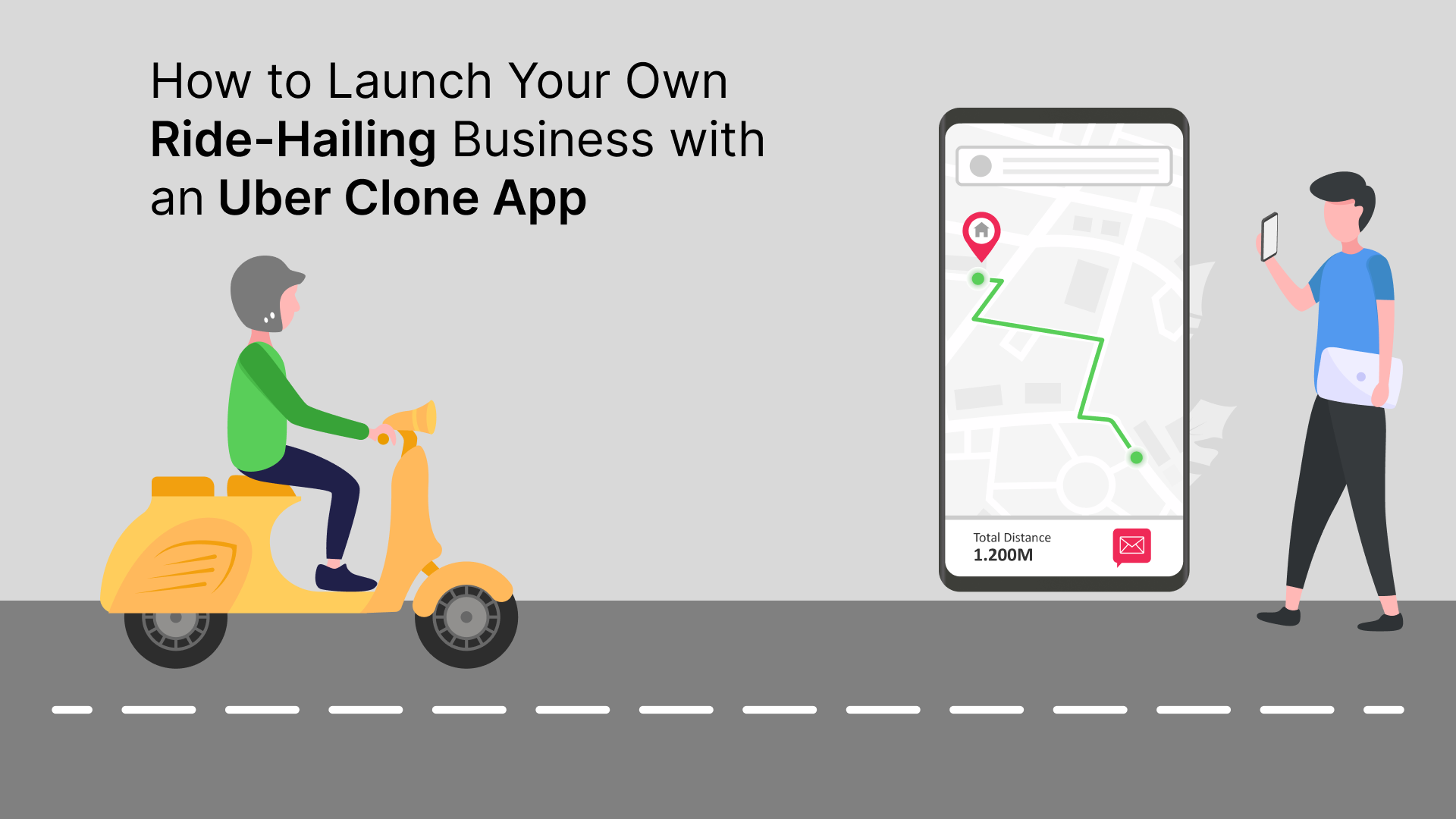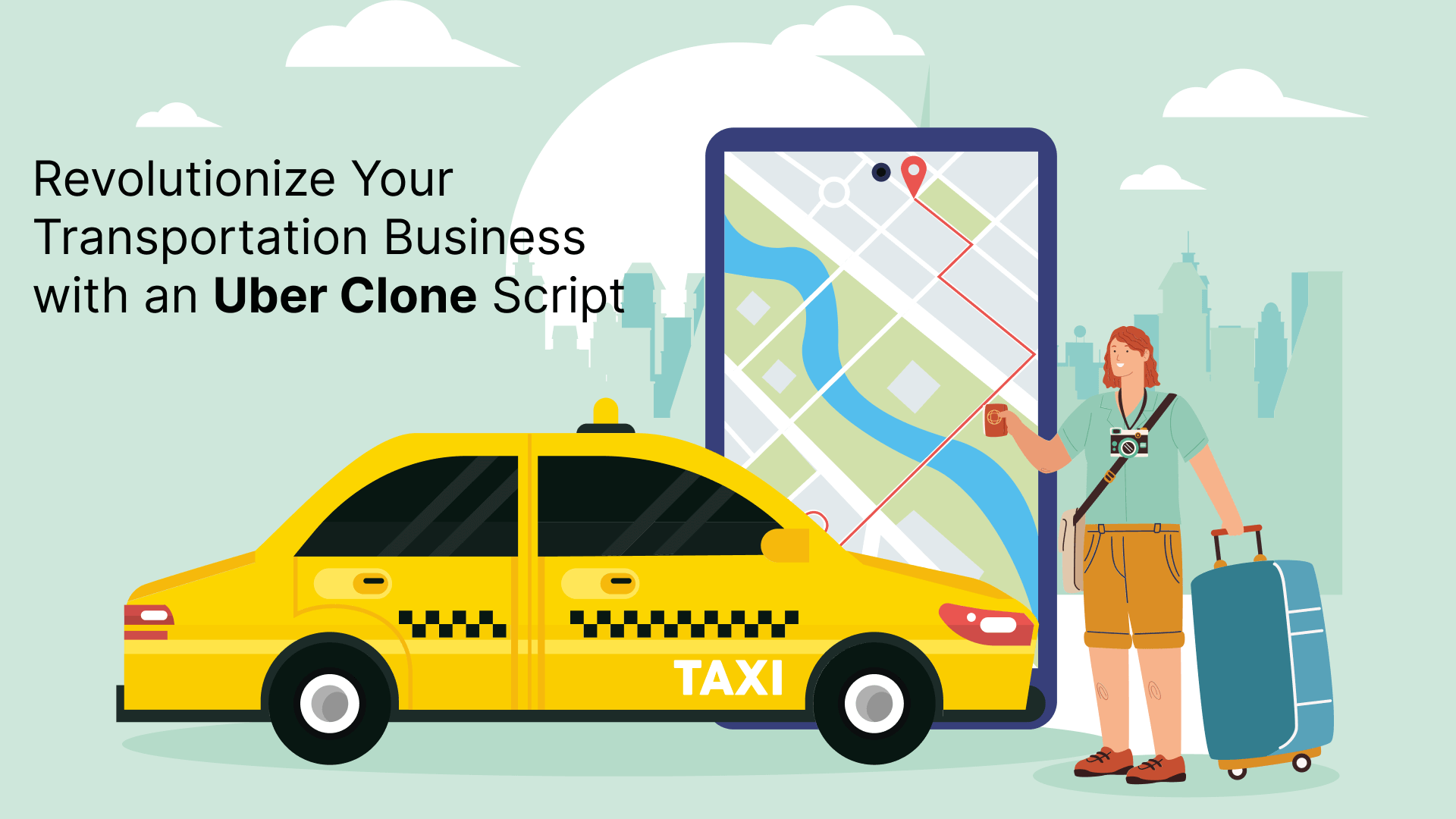How to Launch Your Own Ride-Hailing Business with an Uber Clone App
Launching a ride-hailing business in today’s digital era presents many opportunities for aspiring entrepreneurs seeking to tap into the ever-evolving transportation industry. With the advent of user-friendly technologies and the popularity of on-demand services, creating a successful venture in this space is achievable and lucrative.
This article delves into the intricacies of starting your own ride-hailing business using an Uber clone app, providing insights into the essential steps, key features, marketing strategies, operational management, legal considerations, and future trends shaping the industry. Whether you’re a seasoned business owner or a budding entrepreneur, understanding the dynamics of the ride-hailing ecosystem is crucial to embarking on a successful entrepreneurial journey.
Introduction to Ride-Hailing Business Opportunities
Understanding the Growth of the Ride-Hailing Industry
The ride-hailing industry has seen explosive growth in recent years, revolutionizing how people commute and travel. With the rise of smartphone technology, companies like Uber have paved the way for a convenient and flexible transportation solution.
Benefits of Starting a Ride-Hailing Business
Launching your own ride-hailing business can offer a host of advantages. From flexible working hours for drivers to convenient and affordable transportation options for passengers, the potential for success in this booming industry is vast.
Understanding the Uber Clone App Model
Overview of Uber Clone Apps
Uber clone apps are ready-made solutions that mimic the functionality and features of ride-hailing services like Uber. These apps provide a cost-effective and efficient way to enter the market without the need to build a platform from scratch.
Features and Functionality Comparison with Uber
While Uber clone apps offer similar features to the original platform, they also provide customization options to suit your business needs. From driver tracking to secure payment processing, these apps empower entrepreneurs to create a unique ride-hailing experience.
Key Features and Functionality of a Ride-Hailing App
User Interface and Experience
Any ride-hailing app must have a seamless and intuitive user interface. Ensuring passengers and drivers can easily navigate the app, book rides, and track their journey enhances the overall user experience.
Payment Integration and Security
Integrating secure payment gateways and encryption protocols is crucial for protecting sensitive financial information. Providing multiple payment options and ensuring transaction security builds user trust and drives customer satisfaction.
Driver and Passenger Matching Algorithm
Efficient matching algorithms are vital in connecting drivers with passengers quickly and effectively. Optimizing this process enhances service reliability and ensures a smooth driver and passenger experience.
Steps to Launching Your Own Ride-Hailing Business
Market Research and Competition Analysis
Conducting thorough market research and analyzing the competition is crucial for identifying opportunities and positioning your business effectively. Understanding market trends and consumer preferences can help you tailor your services to meet demand.
Choosing the Right Technology Partner
Selecting a reliable technology partner with expertise in developing ride-hailing apps is essential for a successful launch. Collaborating with experienced professionals can streamline the app development process and ensure a high-quality end product.
Customizing and Testing Your App
Customizing your ride-hailing app to reflect your brand identity and unique selling points is key to standing out in the market. Thoroughly testing the app for functionality, performance, and security before launch is essential to deliver a seamless user experience.
Marketing and Promoting Your Ride-Hailing App
So, you’ve got your Uber clone app ready to roll, but how do you make sure people know about it? Let’s explore some key strategies for spreading the word and increasing download numbers!
Building a Strong Brand Identity
Your brand is like your app’s personality – it’s what sets you apart from the competition. Think about what makes your ride-hailing service unique and build your brand around that. Whether it’s affordable prices, top-notch customer service, or a funky logo, make sure your brand identity shines through in all your marketing efforts.
Digital Marketing Strategies for User Acquisition
In today’s digital age, online marketing is key to reaching your target audience. From social media campaigns to search engine optimization (SEO), there are plenty of ways to attract users to your app. Get creative with your marketing strategies and experiment with different tactics to see what works best for your app.
Partnerships and Collaborations for Growth
Sometimes, two heads are better than one. Collaborating with other businesses or influencers can help you reach a wider audience and drive more downloads. Partnering with local restaurants, hotels, or events can be a win-win for both parties – they get access to your ride-hailing service, and you get exposure to their customers.
Managing Operations and Ensuring Customer Satisfaction
Running a ride-hailing business isn’t just about driving people from A to B – it’s also about making sure your drivers are happy, your customers are satisfied, and everything runs smoothly behind the scenes.
Driver Recruitment and Training
Your drivers are the face of your business, so it’s essential to recruit and train them effectively. Ensure you have a rigorous screening process to ensure you’re hiring reliable and professional drivers. Providing ongoing training and support can also help keep your drivers happy and motivated.
Crisis Management and Customer Support
When things go wrong (and they inevitably will), a solid crisis management plan is crucial. Whether it’s a lost item, a delayed ride, or a technical glitch, being prepared to handle customer complaints and issues promptly can make all the difference in maintaining a positive reputation.
Feedback Collection and Continuous Improvement
Feedback is a gift – even when it’s not what you want to hear. Encourage both drivers and customers to provide feedback on their experiences with your app. Use this valuable input to identify areas for improvement and make necessary changes to enhance the overall customer experience.
Legal and Regulatory Considerations for Ride-Hailing Businesses
Nobody likes red tape, but when it comes to running a ride-hailing business, staying on the right side of the law is essential. Here’s what you need to know about legal and regulatory considerations in the industry.
Understanding Local Regulations and Licensing Requirements
Different cities and countries have varying regulations for ride-hailing services, so it’s crucial to familiarize yourself with the legal requirements in your operating area. Compliance is key to avoiding potential legal issues, from licensing and insurance to background checks and vehicle inspections.
Data Privacy and Security Compliance
With the rise of data breaches and privacy concerns, protecting your users’ personal information is non-negotiable. Implement robust security measures to safeguard sensitive data, and ensure compliance with data privacy laws to build trust with your customers.
Future Trends and Innovations in the Ride-Hailing Industry
The ride-hailing industry is constantly evolving, with new technologies and trends shaping the way we get around. Here are some exciting innovations to keep an eye on in the future.
Integration of AI and Machine Learning in Ride-Hailing Apps
AI and machine learning technologies are revolutionizing the ride-hailing experience, from predicting rider demand to optimizing driver routes. By harnessing the power of AI, ride-hailing apps can offer more personalized and efficient services to users.
Electric and Autonomous Vehicles in the Ride-Hailing Ecosystem
The shift towards sustainable transportation is driving the adoption of electric and autonomous vehicles in the ride-hailing sector. Companies like Tesla and Uber are investing in electric fleets and autonomous driving technology to reduce emissions and improve safety on the roads. Watch this space for exciting developments in eco-friendly and self-driving rides!
Conclusion
In conclusion, launching your own ride-hailing business with an Uber clone app can be a rewarding endeavor with the right strategies and execution. By leveraging the insights and guidance provided in this article, you can navigate the industry’s complexities, build a strong brand, and create a seamless experience for drivers and passengers.
As you embark on this entrepreneurial journey, remember to stay adaptable, customer-focused, and innovative to stay ahead in the competitive landscape of the ride-hailing industry. Here’s to your success in revolutionizing the way people commute and creating a thriving business in the digital age.
FAQ
1. What is an Uber Clone App and how can it help me start a ride-hailing business?
An Uber Clone App is a ready-made solution that replicates the features and functionalities of popular ride-hailing apps like Uber. It provides you with a customizable platform to launch your own ride-hailing business quickly and efficiently. By using an Uber Clone App, you can save time and resources on app development and focus on growing your business.
2. What are the key features to look for in an Uber Clone App?
When choosing an Uber Clone App for your ride-hailing business, look for essential features such as user-friendly interfaces for drivers and passengers, real-time tracking, secure payment options, a ratings and reviews system, in-app messaging, and a robust admin panel for managing operations. Customization options, scalability, and technical support are also important factors to consider.
3. How can I market my ride-hailing business effectively after launching it with an Uber Clone App?
To effectively market your ride-hailing business, utilize digital marketing strategies such as social media advertising, search engine optimization (SEO), influencer partnerships, and email marketing. Offer promotional deals and discounts to attract new customers and retain existing ones. Collaborate with local businesses, hotels, and event organizers to reach a wider audience. Providing excellent customer service and continuously seeking feedback to improve your services will also help in building a loyal customer base.


